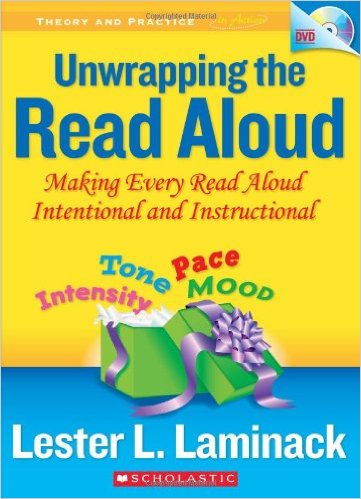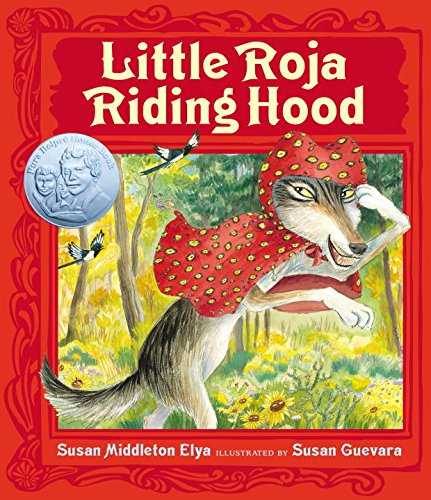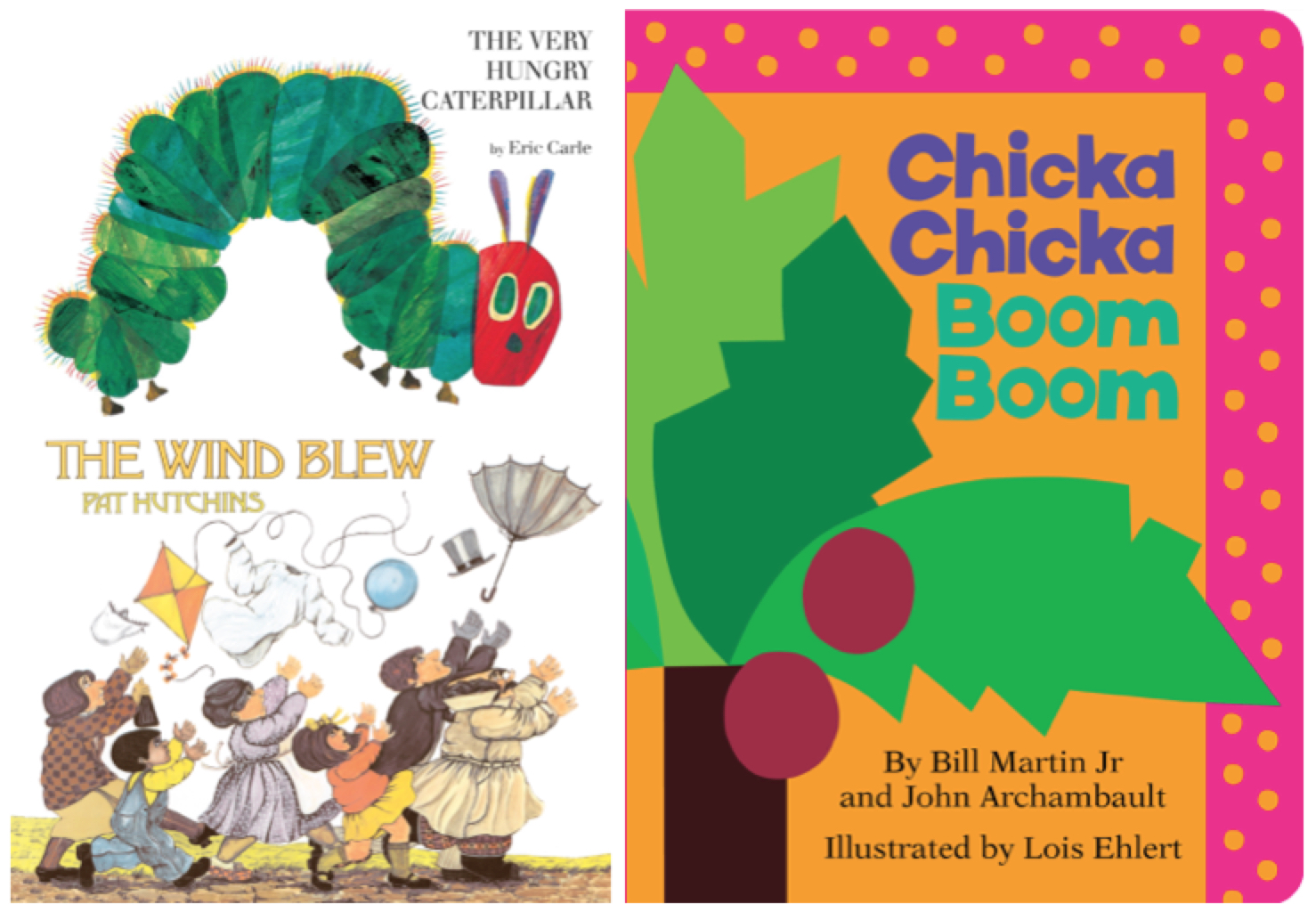By Dr. Megan McCaffrey and Dr. Katy E. Hisrich, Governors State University
Last week, we discussed the importance and benefits of read alouds. We know that read alouds offer numerous benefits and have significant impact on a child’s literacy skills and language development. Now the question remains, “what are the best practices for a read aloud?” This week, we will focus on the characteristics of read alouds. This is includes the factors that one should consider when conducting a read-aloud. I think about this using a simple acronym: P-E-T. Purpose-Environment-Technique.
Purpose: What is the purpose of the read-aloud?
It is important to outline your expectations of the read aloud ahead of time to know which characteristics of read alouds to use. Are you doing it to stimulate or instruct? Let’s look at the book, Little Roja Riding Hood written by Susan Middleton Elya, with illustrations by Susan Guevara. This book is a delightful twist on the classic fairytale, as it involves a modern, Hispanic culture. You could use this book to stimulate and engage the children in its rhymes and flow, not to mention its Spanish words that are muy divertido. Or, perhaps your purpose with this book is to instruct students on the fairytale genre, by doing a compare and contrast of several different versions of Little Red Riding Hood.
 In his book, Unwrapping the Read Aloud, Lester Laminack describes how to make every read aloud intentional. Part of this includes setting the purpose and objective for the read aloud. He states that “we must pay careful attention to our intentions for the read aloud” (Laminack, 2009, p. 18). It is worthwhile to mention the “enjoyment” factor. While some of you may think that a purpose of a read-aloud is enjoyment, this is just merely the by-product of hopefully every read aloud you conduct — or participate in.
In his book, Unwrapping the Read Aloud, Lester Laminack describes how to make every read aloud intentional. Part of this includes setting the purpose and objective for the read aloud. He states that “we must pay careful attention to our intentions for the read aloud” (Laminack, 2009, p. 18). It is worthwhile to mention the “enjoyment” factor. While some of you may think that a purpose of a read-aloud is enjoyment, this is just merely the by-product of hopefully every read aloud you conduct — or participate in.
Environment: Where is the read aloud taking place? What environmental factors impact a read aloud?
Many people may not reflect on environmental factors to determine the characteristics of read alouds they use. Whether you are reading aloud with one child or an entire class, the environment plays a role in determining its success. The loudness, light, comfort, and temperature all can influence a read aloud and its participants. Loud classrooms and uncomfortable chairs are not conducive to paying attention. Time of day can also impact how engaged children are. If you are reading aloud when students come back from recess, it might prove to be more difficult to settle them down to actively listen to a story. Consider these scenarios.
Scenario A: A parent reading a story in the kitchen with various loud noises. A teacher reading aloud to a class while students are in the dark, sitting in desks.
Scenario B: A parent reading a story on the couch, with warm lights and no television on in the background. Students listening to a teacher read aloud a story on the carpet with their own personal space to sit comfortably.
I would rather be a child in second set of scenarios — at least if I am supposed to concentrate on the stories. Thinking back to my own childhood, I can recall from preschool age to middle school, my mom and dad reading stories to me in both my room and their room as we snuggled up before my bedtime. This read aloud routine and special environment not only engaged me in the story, as I was away from all of the distractions in my house, but it created a bond between us and was one of the few occasions I enjoyed reading as a child.
Technique: How is the read aloud conducted? What are the best techniques to use?
Think back to when you were a child (or even now when you are reading aloud to others). Were you engaged in the story? Why or why not? What sticks out when you think of a good read aloud? What about one that wasn’t very good? My mom and several of my elementary teachers were great with read alouds. Characteristics of read alouds that come to my mind: animated, gesturing and enthusiastic. Those who were not skilled at reading aloud were monotone, soft-spoken and boring. As Mem Fox says, “there’s no exact way to do it, reading aloud is in fact an art form” (Fox, 2008, p. 41). While some people may be innately better than others at reading aloud, it is a skill that can be learned.
Good read alouds engage children and hold their attention. Some basic techniques to use during read alouds include:
Voice
• Tone – fluctuate the tone
• Intensity – vary the volume
• Variety – use different voices
Expression and Animation
• Eyes – maintain eye contact; show emotion
• Face – use facial expressions; be animated
• Hands – implement hand movements and gestures
Pace
• Speed – use an appropriate speed; avoid reading too fast or to slow
• Pauses – pause to ask questions or place emphasis on the text
The book Shh! We Have a Plan by Chris Haughton (The Irma Simonton Black and James H. Black Award for Excellence in Children’s Literature), allows for the reader to vary their voice tone and intensity, as well as use gestures and facial expressions. Another technique is to use props, such as items found in books like The Wind Blew by Pat Hutchins and The Very Hungry Caterpillar by Eric Carle. Actively involving children in the story can also augment a read aloud. Children can participate by using gestures or saying certain words when they appear in the story, such as in the popular early childhood book, Chicka Chicka Boom Boom by Bill Martin Jr. and John Archambault.
Next week we will look at the art of the book selection — how to select books that are good for read alouds.
References
Allyn, P. (2009). What to read when: The books and stories to read with your child–and all the best times to
read them. New Yory, NY: Penguin Group.
Fisher, D., Flood, J., Lapp, D., & Frey, N. (2011). Interactive read-alouds: Is there a common set of practices?
The Reading Teacher, 58(1), 8-17.
Fox, M. (2008). Reading magic: Why reading aloud to our children will change their lives forever. New
York, NY: Harcourt, Inc.
Laminack, L. (2009). Unwrapping the read aloud: Making every read aloud intentional and instructional.
New York, NY: Scholastic, Inc.
Trelease, J. (2013). The read-aloud handbook. New York, NY: Penguin Group.
Journey through Worlds of Words during our open reading hours: Monday through Friday 9 a.m. to 5 p.m., Saturday 9 a.m. to 1 p.m. Check out our two online journals, WOW Review and WOW Stories, and keep up with WOW’s news and events.
- Themes: Katy E. Hisrich, Megan McCaffrey
- Descriptors: Student Connections, WOW Currents




I agree completely that the environment is a huge factor in a read aloud. Based off my personal experience I need a quiet setting with little to no distractions in order to focus on a book. As a pre-service teacher when I first conducted read alouds in the classroom I didn’t always make sure that the environment was quiet and confortable. I disregarded the thought that if I needed quiet maybe my students did also. I now make sure that no music is playing, that all the children are sitting and ready to pay attention, and that there are no new material lying around that might catch their attention. I have definitely had to learn as I go but that’s part of the process.